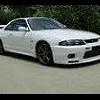How often to Dyno tune
Announcements
-
Similar Content
-
Latest Posts
-
Does that German restaurant still exist in the old place out the NW end of Goulburn? When I say "out the NW end of"...I am really being vague. It was 1997 when I was last there, and the only point of reference I can recall is that it was on the opposite side of the main drag from the big merino. And when I say "opposite side of the main drag", I don't mean "on the main drag". It was either a couple of streets back from there, or might have even been out in the sticks a bit further. Was an old farm building or mill or somesuch. And when I say "the big merino" I might actually be thinking of a completely different part of town, because I just looked on maps and the big bugger is not where I remembered him to be! The food was good, consisting largely of various German mystery-meat sausage/loaf things and kartofflen.
-
So while the second sentence is completely correct and the whole point of the conversation, the first sentence bears consideration. If this bloke is just hoping to throw big turbos on and drive it around, because there are no helpful facilities at all in his tropical paradise** then he likely has zero chance of even knowing what the TP is on the last column in the stock maps, let alone know whether the ECU is operating anywhere near it or past it. So the point is very very moot. And, per what I said before, at stock boost on those turbos, you may well be off the end of the map. **I'm just back from Vanuatu, so I know exactly what small Pacific nations can be like wrt paradise without requisite facilities. But it's not even that simple. I put a high flow on my car and had to drive it around with a proper tune because of the lack of opportunity*** to put the bigger AFM and injectors into it to allow it to be tuned. I had to turn the boost down to less than I had before, and back off the boost controller's ramp, because it was exploring parts of the map that it didn't drive in before, and really couldn't access for tuning on the dyno either, and so was pinging. It was still well within the last column, because when I first**** set up the Nistune on the Neo I rescaled all axes of the maps to give some more space to explore. ***Family dyno was broken ****This was 13 years ago, and the TIM thing wasn't a thing then and so TP would definitely grow when pushing past the stock tune's limits.
-
By joshuaho96 · Posted
Yep, this bit another local owner. I caught it before putting the transmission back into the car, what I noticed was the pressure plate fingers weren't flat and even. It's more obvious with the pull style clutch because the throwout bearing ring was visibly not flat once everything is put together. Nismo should really update their instructions to call out this specific detail. I'm not even sure the clutch as-shipped orients everything properly. -
By jayden_l33 · Posted
It ended up being that orientation of the float hub in relation to the clutch disk, when I installed it, I heard a loud click and being stupid, I decided to not take it a part and check it. The hub didn't properly align with the clutch disk and was causing the issue. Definitely an odd one! Dahtone Racing was able to fix me right up, stand up blokes! -
By joshuaho96 · Posted
Right, but I'm saying on the stock ECU measured airmass from the MAF is no higher than stock. So it's accounting for the higher flow rate iso-manifold pressure. You just have to keep turning down the boost until you're within the stock tune's load scale. If you run off the end there's no telling what will happen. This does mean there's zero benefit to the turbos you're running vs stock, if anything it's just a straight downgrade because the transient response is worse, you don't even get the ECU's boost solenoid helping to pull the wastegate closed during initial spool, and peak power is only whatever the factory map can give you before you hit the R&R corner. On a -9 I would bet that you would have to change out the wastegate spring once you have a real ECU and you're tuning it for real. I'm not saying this is a remotely ideal state of affairs, it's just a way to keep it driveable until you can get a proper tune done.
-





Recommended Posts
Create an account or sign in to comment
You need to be a member in order to leave a comment
Create an account
Sign up for a new account in our community. It's easy!
Register a new accountSign in
Already have an account? Sign in here.
Sign In Now